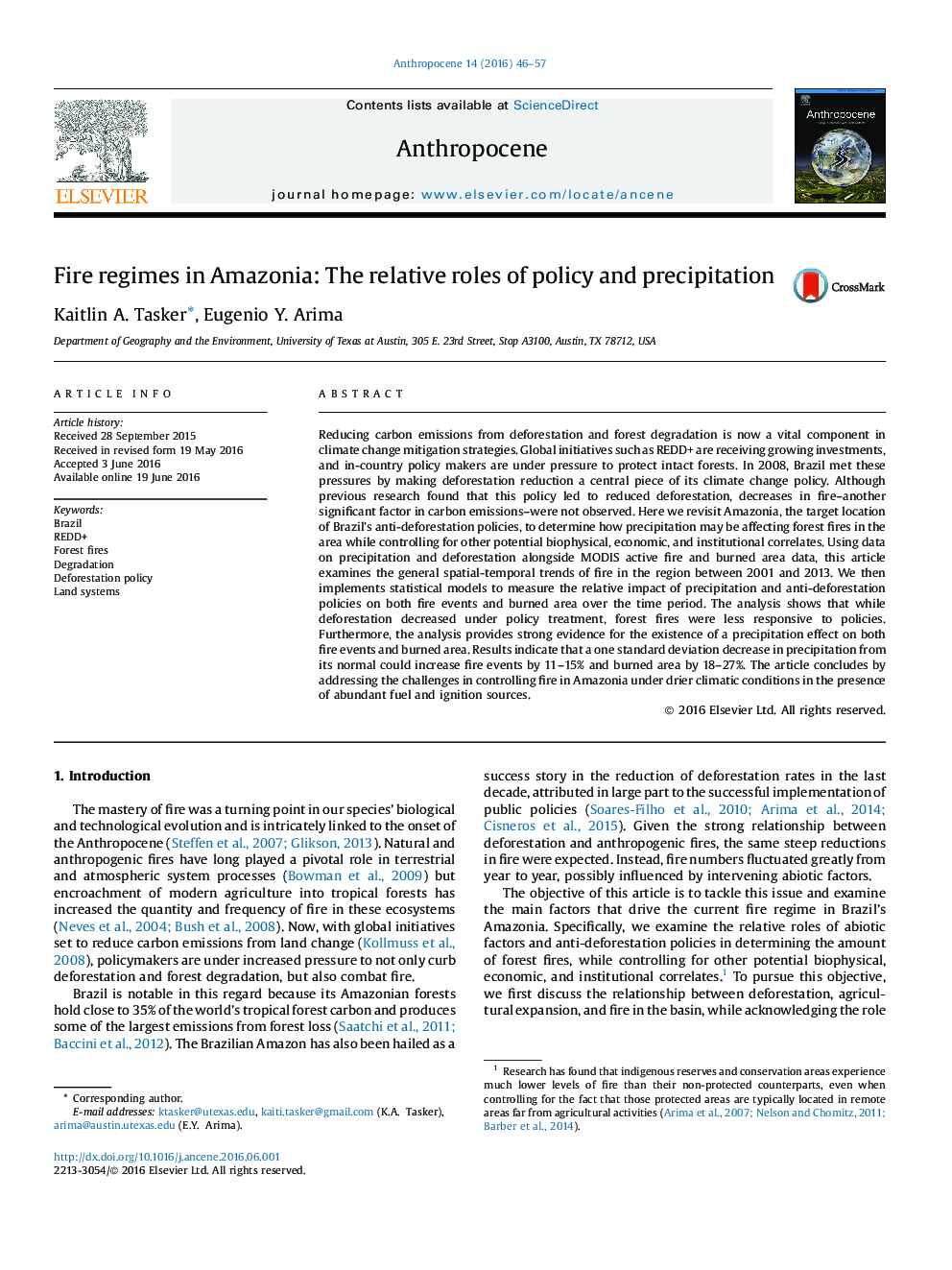| کد مقاله | کد نشریه | سال انتشار | مقاله انگلیسی | نسخه تمام متن |
|---|---|---|---|---|
| 4461851 | 1621511 | 2016 | 12 صفحه PDF | دانلود رایگان |
• Recent policies in the Brazilian Amazon have decreased deforestation.
• However, fire increased in dry years even when deforestation continued to decline.
• A one standard deviation decrease in precipitation increases fire by 11–27%.
• The precipitation effect may outdo policies in dry years.
• Forest fires are likely to increase under drier climate state in southern Amazonia.
Reducing carbon emissions from deforestation and forest degradation is now a vital component in climate change mitigation strategies. Global initiatives such as REDD+ are receiving growing investments, and in-country policy makers are under pressure to protect intact forests. In 2008, Brazil met these pressures by making deforestation reduction a central piece of its climate change policy. Although previous research found that this policy led to reduced deforestation, decreases in fire–another significant factor in carbon emissions–were not observed. Here we revisit Amazonia, the target location of Brazil’s anti-deforestation policies, to determine how precipitation may be affecting forest fires in the area while controlling for other potential biophysical, economic, and institutional correlates. Using data on precipitation and deforestation alongside MODIS active fire and burned area data, this article examines the general spatial-temporal trends of fire in the region between 2001 and 2013. We then implements statistical models to measure the relative impact of precipitation and anti-deforestation policies on both fire events and burned area over the time period. The analysis shows that while deforestation decreased under policy treatment, forest fires were less responsive to policies. Furthermore, the analysis provides strong evidence for the existence of a precipitation effect on both fire events and burned area. Results indicate that a one standard deviation decrease in precipitation from its normal could increase fire events by 11–15% and burned area by 18–27%. The article concludes by addressing the challenges in controlling fire in Amazonia under drier climatic conditions in the presence of abundant fuel and ignition sources.
Figure optionsDownload as PowerPoint slide
Journal: Anthropocene - Volume 14, June 2016, Pages 46–57
